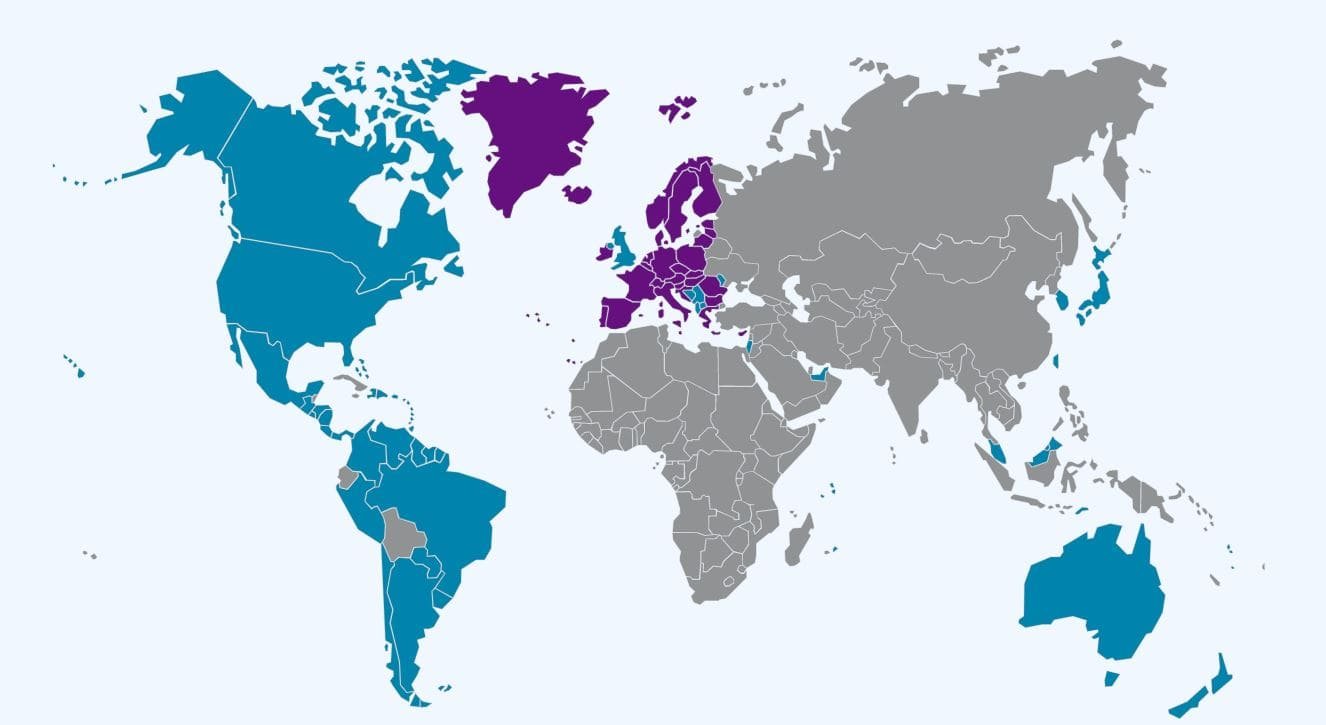- For short tourist stays in Europe, one of two documents is required: an ETIAS or a Schengen visa.
- Visa-exempt travellers will require an ETIAS visa waiver, while all other third-country visitors will require a Schengen visa.

21-11-2022
Europe is the world’s most visited continent. While citizens of the European Union have free movement inside the EU and the Schengen Area, non-EU citizens must get official authorization to enter.
These visitors must apply for either an ETIAS EU visa waiver or a Schengen visa.
The page that follows explains which documents are required as well as the key differences between the ETIAS EU visa waiver and the Schengen visa.
DO I NEED AN ETIAS OR A SCHENGEN VISA?
The ETIAS (European Travel Information and Authorisation System) is for nationals of countries that have visa-free access to the EU zone.
Currently, individuals from over 50 countries outside of the European Union can visit the EU Schengen Area without a visa.
If you are a citizen of one of Europe’s visa-free countries, you can currently enter the EU without a visa.
However, beginning in November 2023, the ETIAS visa waiver will be required to enter the EU without a visa.
Those who are not citizens of a visa-free country must instead obtain a Schengen visa. They are not permitted to enter the Schengen Area unless they have a valid visa.
If you qualify for the ETIAS EU visa waiver, you do not need to apply for a Schengen visa. If you do not qualify for the ETIAS, you must apply for a Schengen visa.
When ETIAS is fully implemented in November 2023, all non-EU travellers will be required to have either an ETIAS visa waiver or a Schengen visa.
KEY DIFFERENCES BETWEEN ETIAS AND A SCHENGEN VISA
An EU visa waiver and a Schengen visa both allow the bearer to enter the Schengen Area, although they differ in several respects.
Some of the significant distinctions between these two travel papers are listed below.
EU TRAVEL AUTHORISATION VS. VISA
One of the primary distinctions between the ETIAS and a Schengen visa is that the ETIAS is a travel authorization rather than a visa. It enables the holder to travel to the Schengen Area without a visa, whereas a Schengen visa is required for non-visa-exempt travellers.
DIFFERENT TYPES OF EU VISA
There is just one choice on the ETIAS application form. The traveller is not required to select an option for their travel authorization. In contrast, there are other types of Schengen visas available, such as single or multiple entry.
ELECTRONIC VS. PAPER VISA
ETIAS is entirely electronic. It is digitally linked to the traveller’s passport, therefore it is completely paperless.
A Schengen visa is a tangible paper document that must be manually entered into the passport of the holder.
APPLICATION PROCESS: ETIAS VS. SCHENGEN VISA
The application process for an ETIAS or a Schengen visa differs. ETIAS visa waivers are available online for visa-exempt travellers, whereas those who are not qualified for ETIAS must apply for a Schengen visa in person at an embassy or consulate.
Each document only has one application method. You cannot apply in person for an ETIAS travel authorization or acquire a Schengen visa online.
COUNTRIES ACCESSIBLE WITH ETIAS OR SCHENGEN VISA
An ETIAS travel authorization is automatically valid in all Schengen countries and EU microstates. The visa waiver is not tied to any one nation.
A Schengen visa also allows the holder to travel to all Schengen Area countries, but you must apply for the document through the diplomatic mission of one of the countries.
